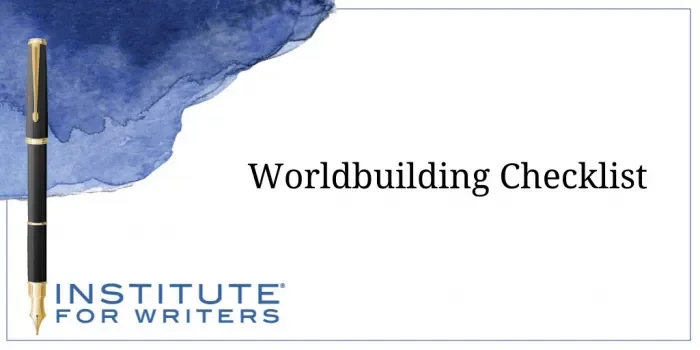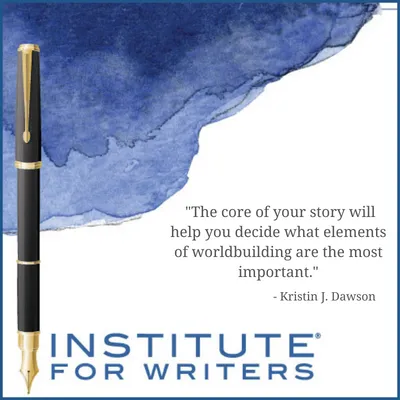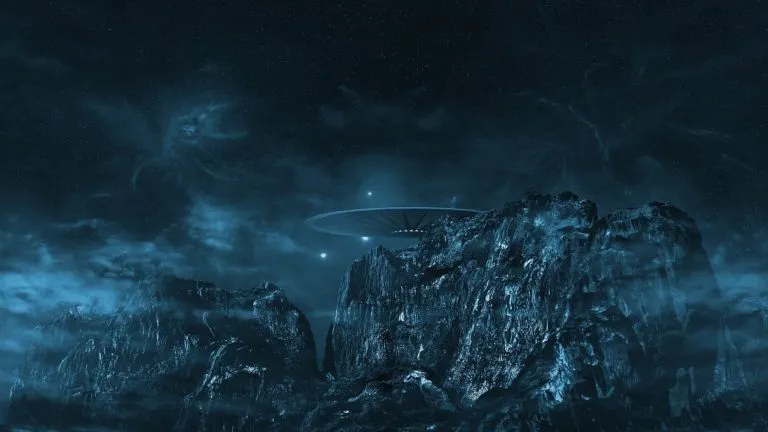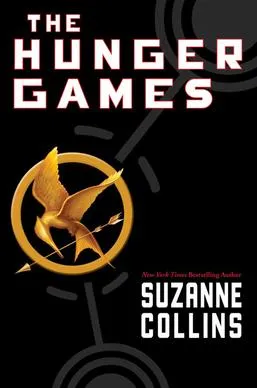1000 N. West Street #1200, Wilmington, DE 19801
© 2024 Direct Learning Systems, Inc. All rights reserved.

We teach our students how to write and get published!
View our Course Catalog >
 Geography: weather, climate, mountains, rivers, etc.
We often think of this in a grand sense of multiple kingdoms, however, the focus can be on a single city, like in Mistborn, or in the science fiction movie, Minority Report.
Magic/Technology: limited and unlimited
Not all SF&F have magic or an emphasis on tech (example: The False Prince or The Thief), but magic is generally broken down into two categories: limited/hard (example: any books by Brandon Sanderson, or heavily science-based stories), or unlimited/soft (example: The Girl Who Drank the Moon, or The Hunger Games).
Culture and History: customs, language, important historical events, artifacts, ethics/values, religion, education, weapons, etc. (example: pretty much any fantasy novel with a queen or a prince!)
Geography: weather, climate, mountains, rivers, etc.
We often think of this in a grand sense of multiple kingdoms, however, the focus can be on a single city, like in Mistborn, or in the science fiction movie, Minority Report.
Magic/Technology: limited and unlimited
Not all SF&F have magic or an emphasis on tech (example: The False Prince or The Thief), but magic is generally broken down into two categories: limited/hard (example: any books by Brandon Sanderson, or heavily science-based stories), or unlimited/soft (example: The Girl Who Drank the Moon, or The Hunger Games).
Culture and History: customs, language, important historical events, artifacts, ethics/values, religion, education, weapons, etc. (example: pretty much any fantasy novel with a queen or a prince!)
 Examples of Geology influencing Plants & Animals:
• A great example is in The Way of Kings by Brandon Sanderson, where plants are impacted by the terrain/weather. As you might guess from the series title, The Stormlight Archive, the story world endures frequent “highstorms.” The ecology of this world is incredibly developed, with tons of details about biological evolution. Plants literally move to protect themselves from the storms, develop rock-like shells, and frantically feed after every storm.
• In The Hunger Games, by Suzanne Collins, we have unknown terrain in “the games.” The protagonist and the reader explore the unknown landscape at the same time. We are shown how technology impacts the geology and animals via unnatural floods and tracker jackers.
Examples of Magic Impacting Communication and Travel:
• In Harry Potter, readers are delighted to explore how magic impacts things like communication (interoffice flying notes, and owls) and transportation. Specifically, with transportation, JK Rowling created multiple whimsical ways to get from one location to another: broomstick, train, floo network, apparition, portkey, knight bus, hippogriffs, and many others!
Example of History Overlapping with Magic:
• The Paper Magician, by Charlie N. Holmberg, is set in Edwardian England. The magic is based on manmade materials found during this historical time, including plastic, glass, metal, rubber, and of course . . . paper. Having manmade items as part of the magic makes this magic system unusual, plus the historical accuracy, catapulted this book straight into the arms of a Disney movie option.
Examples of How Culture and History Elements Interplay:
• The Selection, by Kiera Cass, is all about “bringing down the system.” It delves not only into government and classism, but also into the economy, foreign relations, and fashion.
• In Survivors’ Club, by M.K. Martin, the characters race to stop an outbreak of a manmade virus. Not only is virology a focus of the story, but also corporate politics, ethics/values, and later . . . access to water and other basic infrastructure needs.
Examples of Geology influencing Plants & Animals:
• A great example is in The Way of Kings by Brandon Sanderson, where plants are impacted by the terrain/weather. As you might guess from the series title, The Stormlight Archive, the story world endures frequent “highstorms.” The ecology of this world is incredibly developed, with tons of details about biological evolution. Plants literally move to protect themselves from the storms, develop rock-like shells, and frantically feed after every storm.
• In The Hunger Games, by Suzanne Collins, we have unknown terrain in “the games.” The protagonist and the reader explore the unknown landscape at the same time. We are shown how technology impacts the geology and animals via unnatural floods and tracker jackers.
Examples of Magic Impacting Communication and Travel:
• In Harry Potter, readers are delighted to explore how magic impacts things like communication (interoffice flying notes, and owls) and transportation. Specifically, with transportation, JK Rowling created multiple whimsical ways to get from one location to another: broomstick, train, floo network, apparition, portkey, knight bus, hippogriffs, and many others!
Example of History Overlapping with Magic:
• The Paper Magician, by Charlie N. Holmberg, is set in Edwardian England. The magic is based on manmade materials found during this historical time, including plastic, glass, metal, rubber, and of course . . . paper. Having manmade items as part of the magic makes this magic system unusual, plus the historical accuracy, catapulted this book straight into the arms of a Disney movie option.
Examples of How Culture and History Elements Interplay:
• The Selection, by Kiera Cass, is all about “bringing down the system.” It delves not only into government and classism, but also into the economy, foreign relations, and fashion.
• In Survivors’ Club, by M.K. Martin, the characters race to stop an outbreak of a manmade virus. Not only is virology a focus of the story, but also corporate politics, ethics/values, and later . . . access to water and other basic infrastructure needs.
 The Hunger Games is a great example of making tough choices. While the world is wonderfully rich, Collins does not talk about every single worldbuilding element to the same degree. While food is greatly detailed (signifying the constant struggle for basic caloric intake), as well as fashion (signifying the over-the-top silliness of fashion and “brand” for someone who is going to fight to the death), other worldbuilding elements are less detailed.
We don’t spend much time reading about money’s appearance or transportation. We know that there’s a barter system, but also money is used, and we see that a train exists, but that’s about it. Obviously, the author knows about both the money system and the transportation, but those elements are not critical to the story.
More about this in the third article in this series!
The Hunger Games is a great example of making tough choices. While the world is wonderfully rich, Collins does not talk about every single worldbuilding element to the same degree. While food is greatly detailed (signifying the constant struggle for basic caloric intake), as well as fashion (signifying the over-the-top silliness of fashion and “brand” for someone who is going to fight to the death), other worldbuilding elements are less detailed.
We don’t spend much time reading about money’s appearance or transportation. We know that there’s a barter system, but also money is used, and we see that a train exists, but that’s about it. Obviously, the author knows about both the money system and the transportation, but those elements are not critical to the story.
More about this in the third article in this series!
Kristin J. Dawson is a non-recovering chocolate and romantic English movie addict who loves to read science fiction and fantasy. You can find her most often indulging her favorite things at 2 am — night owls unite! Kristin writes high fantasy with political intrigue, a bit of romance, and of course, magic. She’s was a 2019 UTOPiAcon Debut Book Award Nominee and Swooney Award Nominee. When she’s not writing, taking her kids on mountain adventures, or cleaning out the chicken coop, she’s probably trying to talk her author friends into more shenanigans.
Chat with Kristin on Instagram (@KristinImagines), on Facebook (@KristinJLiterary), or her website at kristinjdawson.com.
1000 N. West Street #1200, Wilmington, DE 19801
© 2024 Direct Learning Systems, Inc. All rights reserved.
1000 N. West Street #1200, Wilmington, DE 19801
© 2024 Direct Learning Systems, Inc. All rights reserved.
1000 N. West Street #1200, Wilmington, DE 19801
© 2024 Direct Learning Systems, Inc. All rights reserved.
1000 N. West Street #1200, Wilmington, DE 19801
© 2024 Direct Learning Systems, Inc. All rights reserved.

1000 N. West Street #1200, Wilmington, DE 19801
© 2025 Direct Learning Systems, Inc. All rights reserved.

1000 N. West Street #1200, Wilmington, DE 19801
©2025 Direct Learning Systems, Inc. All rights reserved. Privacy Policy.
5 Comments